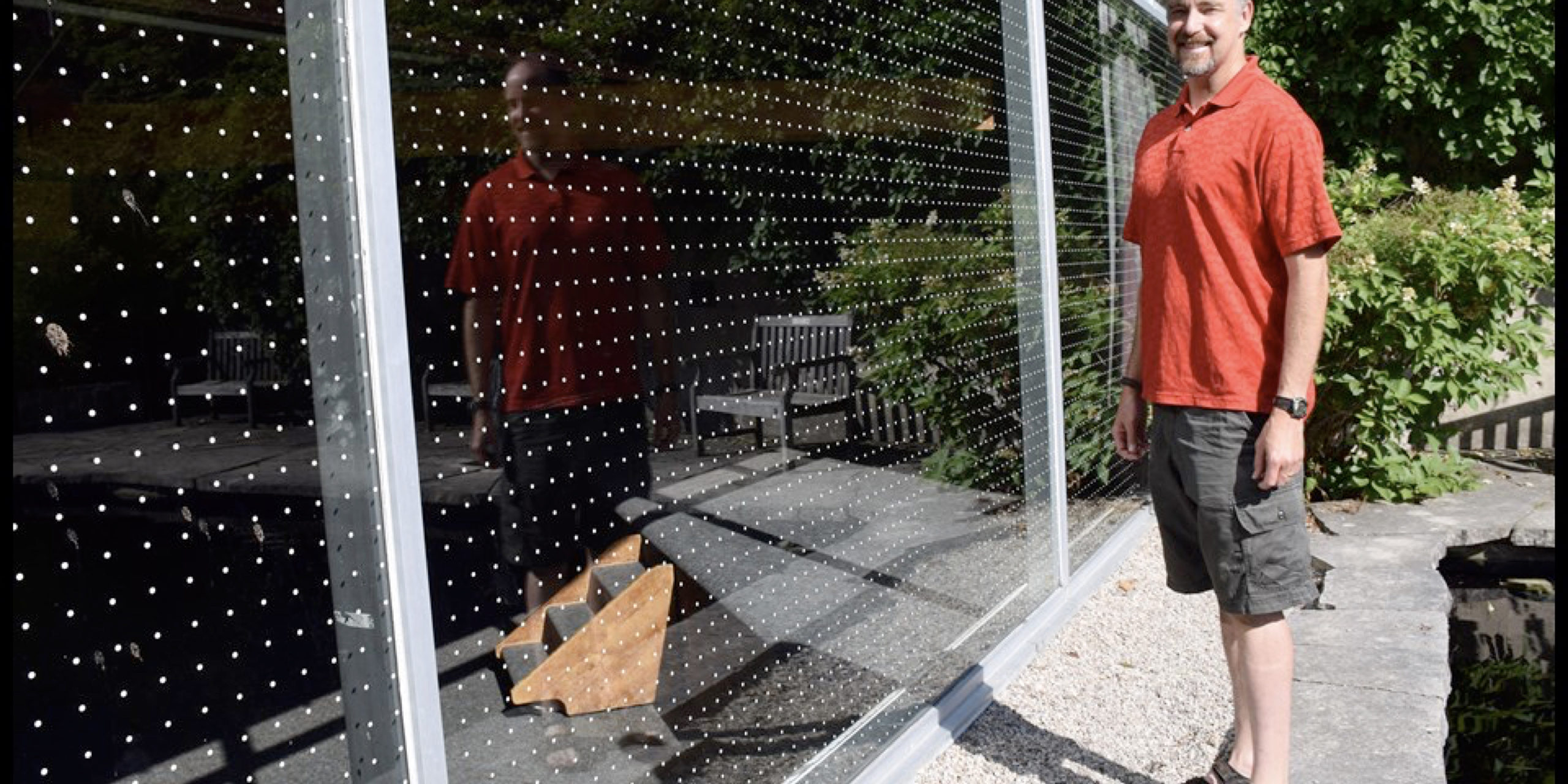With the help of Nature Guelph, the University of Guelph Arboretum has just installed “FeatherFriendly” treatments to 10 large plate glass windows where fatal bird collisions have occurred. The windows now have outside “spots” that birds can see and reduce collisions by interfering with the reflection that can make the windows look like safe greenery.
The inspiration for this initiative came from Paloma Plant, founding member and project coordinator for Toronto-based Fatal Light Awareness Program (FLAP). At the May 2015 talk to our club, Paloma challenged us to do something about the periodic bird strikes on the large glass windows at The Arboretum.
Gordon Aitken took up the challenge and met with The Arboretum staff including Chris Earley as well as Michael Mesure, FLAP’s Executive Director. They highlighted 10 large windows hazardous to flying birds. The challenge was to find a compromise that deters birds, while retaining much of the aesthetics of the building. (All those wedding photos!) The Executive got behind the project, and John Prescott worked with Gordon on fundraising. The Gosling Foundation matched member donations to the project for $1,500, and TD Friends of the Environment made a major donation to the project. We have a small surplus for the project that can be applied to other hazardous windows in Guelph.
The focus of fundraising was not just to help The Arboretum bird-proof its known hazardous windows, which might be seen as just an Arboretum problem, but rather to have a publically accessible demonstration site in Guelph that can be visited by the large number of residents who’ve experienced bird strikes and don’t know what to do about it. We are supporting the demonstration site with handout materials pointing people to sources of effective bird-proofing materials and resources. We’re pleased that The Arboretum has agreed to be a demonstration site in the Guelph area for this simple technology.
Although it is difficult to give exact numbers due to scavengers carrying off dead and injured birds, Chris Earley told us that he has witnessed strikes including Mourning Dove, Hermit Thrush, Black-throated Blue Warbler, White-throated Sparrow, Belted Kingfisher (at least two), American Robin, American Goldfinch, Cedar Waxwing, Ruby-throated Hummingbird, and Downy Woodpecker.
“We are thrilled with the windows, and have had nothing but positive feedback from visitors; people are really interested in the dots!” says Shelley Hunt, Director of the Arboretum. “We’re grateful to Nature Guelph and the TD Friends of the Environment, as well as the Gosling Foundation and Grand River Conservation Authority, for taking this initiative. People who’ve had bird strikes on their windows can come and see how unobtrusive this is.”
We had the following note from Paloma Plant: “Right now, the smile on my face is a mile wide! You have made my day! That is absolutely brilliant news… and, thanks so much for the photos! With your permission I would like to share them on our social media. We would also like to include a small article about it in an upcoming newsletter too… perhaps it will inspire others! I am really thrilled that Nature Guelph stuck with this. Please convey our thanks to all who persevered and made this happen.”
Nature Guelph is grateful to the TD Friends of the Environment for major funding, to the Gosling Foundation, The Arboretum and the Grand River Conservation Authority. Donations came from the following members and supporters: Gordon Aitken, Susan Atkinson, Karen Bateman, Ursula Bock, Kristyn Ferguson, Celia Gibbs, John Hart, Marlene Hart, Bev Healey, Carol Koenig, Linda Lehman, Leslie Lougheed, Elizabeth Miller, John Near, John Prescott, Mary Ramotar, Susan Rietschen, Nina Spzakowski, Elizabeth Taborek, Richard Tofflemire, Bill Wong, Judy Brisson and Bryan Wyatt.

